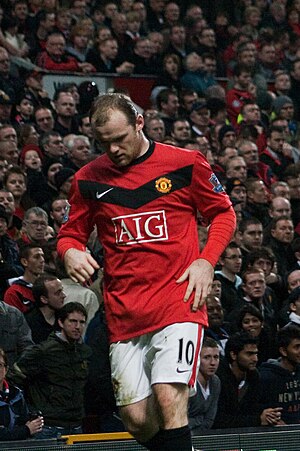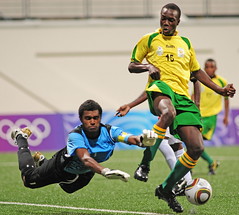Drill Purpose
Many beginning players are afraid of making contact with a player from another team. Often a beginner will avoid a ball if it means running into an opposing player. Harassment is a drill that teaches players to concentrate on the ball when being hassled by players from other teams. It’s also a drill that develops familiarity with handling a ball in crowded areas.
Instructions
1. Four players compose each drill group. Defensive players are about 5 yards apart. Offensive players line up outside the 18-yard line.
2. A throws a ball between the 2 defensive players. At the same time B runs towards the defensive players.
3. B attempts to shoot the ball at the goal. The defensive player runs in front of the ball or does anything possible to impede player B’s attempts to shoot at the goal.
4. Defensive players are not allowed to touch player B or the ball.
Points of Emphasis
Harassment is a simple offensive finishing drill. Players will learn to go after a ball despite being under high pressure. During Harassment, instruct players to
Many beginning players are afraid of making contact with a player from another team. Often a beginner will avoid a ball if it means running into an opposing player. Harassment is a drill that teaches players to concentrate on the ball when being hassled by players from other teams. It’s also a drill that develops familiarity with handling a ball in crowded areas.
Instructions
1. Four players compose each drill group. Defensive players are about 5 yards apart. Offensive players line up outside the 18-yard line.
2. A throws a ball between the 2 defensive players. At the same time B runs towards the defensive players.
3. B attempts to shoot the ball at the goal. The defensive player runs in front of the ball or does anything possible to impede player B’s attempts to shoot at the goal.
4. Defensive players are not allowed to touch player B or the ball.
Points of Emphasis
Harassment is a simple offensive finishing drill. Players will learn to go after a ball despite being under high pressure. During Harassment, instruct players to
- (defensive) use attacking “body language” to add pressure to the offensive player.
- (offensive) become fearless when going after the ball.
- (offensive) learn to take an accurate shot and ignore the pressure.
Progression
As players gain an understanding of the game, further variations include:
- Using a larger playing area and adding another defender.
- Allowing defenders to use their bodies, but in a way that won’t undermine the essence of the drill.
- Requiring offensive players to use both feet when taking shots, if possible.
Motivation / Teaching Tips
Tip #1 – Reward offensive players that score a goal.
Tip #2 – Reiterate to offensive players to be aggressive in congested areas near the goal mouth.
Tip #3 – Encourage all players to play aggressively but also play within the rules.










.jpg)






















.jpg)





.jpg)

